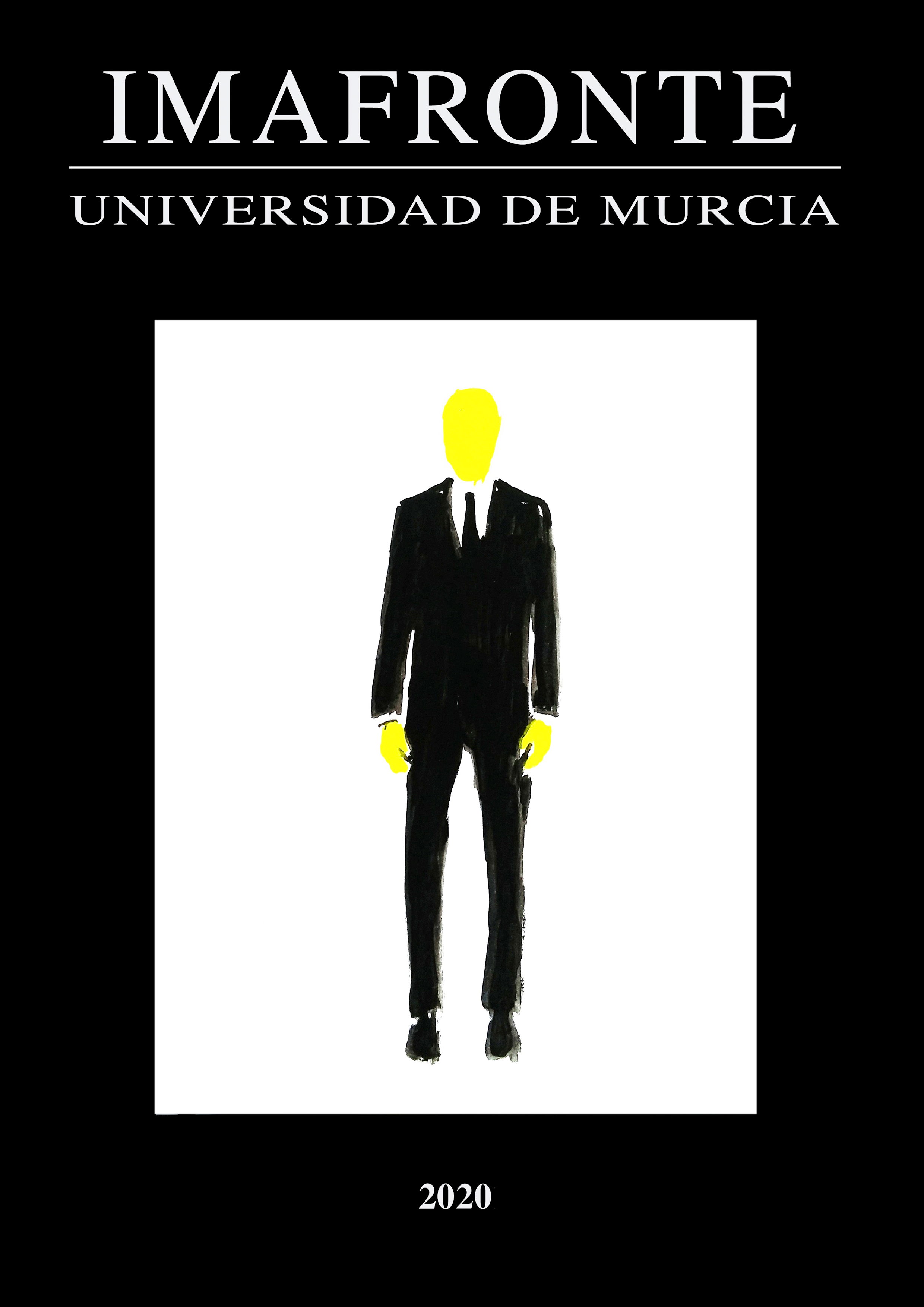Catalina de Médici: Portraits at the service of an image of power
Abstract
The present article analyzes the iconographic evolution in the construction and promotion of the image of power of Catherine de’ Medici, Queen of France in the sixteenth century.
Downloads
-
Abstract1037
-
PDF (Español (España))1218
-
EPUB (Español (España))48
References
University Press. Albornoz Vázquez, M.ª E. (2010). Rumores venenosos, cartas engañosas, gritos de crítica social. Los poderes (im)posibles de las voces femeninas en Chile, 1660-1750. América sin nombre, 15, 79-82.
Broomhall, S., (2015). Early Modern Habsburg Women: Transnational Contexts, Cultural Conflicts, Dynastic Continuities. Parergon, 2, 281 283.
Cagnolati, A. (2010). Un debate sobre la identidad femenina en el Renacimiento. Cuadernos Kóre, 3, 10-17.
Chiorian Wolken, C., (2012). Beauty, power, propaganda, and celebration: profiling women in sixteenth-century italian commemorative medals. Dissertation Advisor: Dr. Edward Olszewski. Department of Art History. Case Western Reserve University School of Graduate Studies.
Crawford, K. C. (2001). Perilous performance. Catherine de Médicis: Staging the Political Woman. Cambridge Massachusetts: Harward University Press.
Eichberger, A. (2001). Renaissance Princes named Margaret Fashioning a public image in a Courtly Society. Melbourne Art Journal, 4, 4-24.
Ffolliott, S. (2020). Juana and her Peers: Queens, Regents, and Patronage in Sixteenth-Century Europe’ Mary of Hungary, Female Rulership, and Portraits by the Leoni. En The Making of Juana of Austria: Gender, Art, and Patronage in Early Modern Iberia. Louisiana LSUP: Noelia García Pérez ed.(en prensa).
Freedberg, D. (1989). The Power of Images. Studies in the History and Theory of Response. Chicago: Chicago University Press.
Frías Sagardoy, M. A. (1993). La mujer en el arte cristiano Bajomedieval. Anuario filosófico, n.º3, 573-598.
García Pérez, N. (2015). Joyas y legitimización de poder en las mujeres gobernantes del Renacimiento. Murcia: Servicio de Publicaciones de la Universidad de Murcia.
Goddard Ball, W. (1992). Lace in portraiture. The Brooklyn Museum Quarterly, 3, 123-133.
González Galván, M.ª G. (2004). Misoginia en la poesía helenística. Fortunatae: Revista canaria de Filología, Cultura y Humanidades Clásicas, 15, 113-122.
González Zymla, H. (2017). Aristóteles y la cortesana: iconografía del filósofo metafísico dominado por el deseo entre los siglos XIII y XVI. Revista digital de iconografía medieval, 17, 7-44.
Jordan, C., (1986). Feminism and the Humanists: The Case of Sir Thomas Elyot’s Defence of Good Women, en Rewriting the Renaissance, The Discourses of sexual difference in Early Modern Europe. Chicago, Londres: Chicago University Press, 242-259.
Kaufman, G. (1978). Juan Luis Vives on the education of women. Signs, journal of women in culture and society, 4, 891-897.
Levy, A., (2003). Widowhood and Visual Culture in Early Modern Europe. En Framing widows: Mourning, Gender and Portraiture in Early Modern Florence. Massachussetts: Asghate Publishing, 211-231
Levy, A., (2003). ‘Imposing Pictures. Widow Portraiture as memorial strategy in Early Modern Florence’. En Witwenschaft in der frühen Neuzeit: fürstliche und adlige Witwen zwischen Fremdund Selbstbestimmun. Leipzig: Leipziger Universitätsverlag, 321-341.
Lheman Miller, E. (2004). Sorrow and Power: atahe tumb of Catherine and Henri II in The image of a queen: the representation of Catherine de’ Medici as Penelope in the Gallery D’Ulysses. Masters of Arts. B.A., The university of South, Athens, Georgia, 22-27.
Luque Magañas, R. (2015). Relaciones entre arte y moda: diálogos y juegos de identidad. Desde la alta costura en el vestir hasta nuestros días. Málaga: Tesis doctoral, Universidad de Málaga.
Macdonald, K. (2007). Colorer les faits: le statut du portrait graphique chez Brantôme. Seizième Siècle, 3, 207-223.
Martín Casares, A. (2002). Las mujeres y la “paz en la casa” en el discurso renacentista. Chronica Nova, 29, 217-244.
Martínez Marín, C. M. (2014). El mecenazgo artístico de María de Hungría en el contexto europeo”. VI Congreso virtual sobre Historia de las mujeres / Manuel Cabrera Espinosa (dir. Congr.), Juan Antonio López Cordero (dir. Congr.), Jaén, 35 págs.
Reumont, A. V. (1886). La jeunesse de Catherine de Médicis. Paris: Henri Plon.
Samaranch, F., (1986): Aristóteles, Obras (Del alma. Ética Nicomaquea. Ética Eudemiana. Política. Constitución de Atenas. Poética), Madrid: Editorial Aguilar.
Sánchez Hernández, M.ª L. (2015) La indumentaria monjil femenina en los siglos XVI y XVII. En Comercio y cultura en la edad moderna. Sevilla: Iglesias Rodríguez, Juan J. et alii Editores, 1887-1900.
Sánchez Ortiz, A. (1999). El color: símbolo de poder y orden social. Apuntes para una historia de las apariencias en Europa. Revistas Espacio, Tiempo y Forma, 12, 321-354.
Patricia-Ann, L. (1990). A Bodye Politique to Governe: Aylnter, Knox and the Debate on Queenship. The Historian, 2, 242-261.
Patton, E. (1992). Second Thoughts of a Renaissance Humanist on the education of Women: Juan Luis Vives Revises His De institutionie feminae christianae. American notes, 2 y 3, 111-114.
Porter, M. A. (1995). The draftsmanship of Jacopo Chimenti Da Empoli. Thesis adviser: Dr Edward J. Olszewski. Dpto de Historia. Case Western University, mayo 1995, p. 34.
Viera, J. D. (1975). El hombre cuerdo no debe fiar de la mujer ningún secreto, como tema de la literatura hispánica. Thesaurus, 3, 557-560.
Wayne, V. (1985). Some Sad Sentence Vives’ Instruction of a Christian Woman. In Silent but for the Word: Tudor Women as Patrons, Translators, and Writers of Religious Works. Kent, Ohio: Kent State University Press, 15-29.
Wood, D. S. (1997). In Praise of Woman’s Superiority: Heinrich Cornelius Agrippa’ s De Nobilitate (1529). En Sex and Gender in Medieval and Renaissance. New York: Albany University of New York Press, 189-205.
Zvereva, A. (2011). Les portraits dessinés de la cour des Valois. Les Clouet de Catherine de Médicis. París: Arthena.
Copyright (c) 2020 María Cristina Grau

This work is licensed under a Creative Commons Attribution-ShareAlike 4.0 International License.
1. The authors non-exclusively assign the exploitation rights (reproduction, distribution, communication and transformation) to the magazine.
2. The works published in this magazine are subject to the Attribution-ShareAlike 4.0 International license (CC By SA 4.0). Therefore, they can be copied, used, disseminated, transmitted and publicly displayed, provided that:
i) the authorship and the original source of its publication (journal, editorial and URL of the work) are cited, thus allowing its recognition.
ii) it is allowed to remix, transform or create from the material while maintaining the same license as the original.

3. Self-archiving conditions. Authors are allowed and encouraged to electronically disseminate the pre-print (version before being evaluated) and/or post-print (version evaluated and accepted for publication) versions of their works before publication, as it favors their publication. Earlier circulation and diffusion and with it a possible increase in its citation and reach among the academic community. Color RoMEO: verde.






















